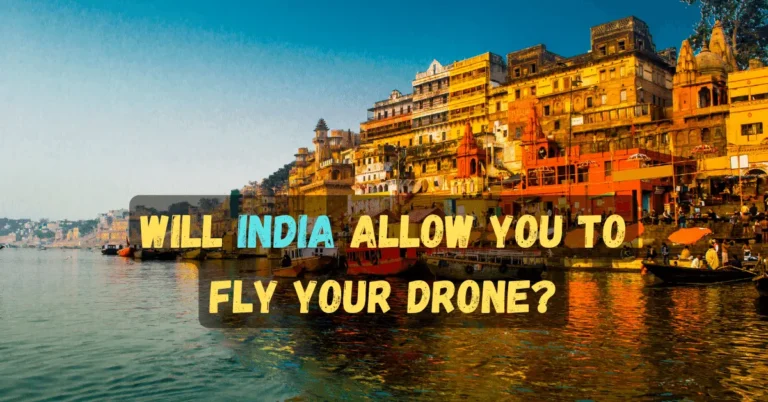Consequences of Accidentally Flying a Drone into a No-Fly Zone

No-fly zones are specific areas where the operation of unmanned aerial vehicles (UAVs) or drones is restricted or entirely prohibited.
These zones are established for various reasons, including national security, privacy concerns, and the safety of air traffic. Understanding the different types and locations of no-fly zones is crucial for any drone operator.
There are several types of no-fly zones, each serving a unique purpose. Military no-fly zones often surround bases and testing grounds to prevent unauthorized access and ensure national security.
Similarly, government buildings and critical infrastructure, such as power plants and communication hubs, are off-limits to protect against potential threats.
Public safety no-fly zones, including areas around airports and heliports, are designed to prevent collisions between drones and manned aircraft.
Additionally, temporary no-fly zones can be established for major events, natural disasters, and emergencies to ensure the safety of participants and first responders.
The establishment of no-fly zones is driven by multiple concerns. Security is a primary factor, as unauthorized drone flights can pose significant risks to sensitive locations.
Privacy issues also play a role; for instance, flying a drone near residential areas or private properties can lead to unwarranted surveillance and data collection.
Moreover, the safety of manned aircraft is a significant concern, as drones can interfere with flight paths, leading to potential accidents.
No-fly zones are regulated and enforced by various authorities, including aviation agencies, law enforcement, and military organizations.
In the United States, the Federal Aviation Administration (FAA) is responsible for defining and monitoring these zones.
Advanced technologies are employed to mark and monitor no-fly zones. Geofencing, for instance, uses GPS and software to create virtual boundaries that prevent drones from entering restricted areas.
Additionally, radar systems and other surveillance technologies are utilized to detect and track unauthorized drone activities.
Overall, adhering to no-fly zone regulations is essential for drone operators to ensure compliance with the law and contribute to the safety and privacy of the community.
Wondering if police drones are a helpful tool? Dive deeper into this question: Is Using Police Drones a Good Idea, and How Should It Be Used?
Immediate Legal and Financial Consequences
Flying a drone into a no-fly zone, even if done accidentally and temporarily, can lead to significant legal and financial repercussions.
Regulatory bodies like the Federal Aviation Administration (FAA) in the United States have stringent rules governing airspace usage.
The immediate consequences typically include hefty fines that may range from hundreds to thousands of dollars, depending on the severity of the violation and the specific no-fly zone breached.
For instance, flying a drone near an airport poses a high risk to aviation safety and often results in the steepest fines and penalties.
In addition to fines, there is also the possibility of having the drone confiscated by authorities. This measure is particularly common in sensitive areas, such as near military installations or government buildings, where security concerns are paramount.
The type of no-fly zone involved greatly influences the severity of the consequences. For example, violating airspace around military bases or critical infrastructure can lead to more severe penalties compared to less sensitive areas like national parks, although the latter still incur significant fines and potentially legal action.
Moreover, drone operators may face criminal charges, especially in cases where there is perceived intent or negligence.
These charges can result in a criminal record, which can have long-lasting impacts on the individual’s personal and professional life.
The legal proceedings can be both time-consuming and costly, adding to the financial burden already imposed by fines and penalties.
Ultimately, the immediate legal and financial consequences of flying a drone into a no-fly zone underscore the importance of understanding and adhering to airspace regulations.
Drone operators must ensure they are aware of restricted areas and comply with all applicable guidelines to avoid these severe repercussions.
Want to learn more about the innovative life-saving technology? Dive into our comprehensive review of The Flying Lifebuoy Drone.
Safety and Security Risks
Accidentally flying a drone into a no-fly zone presents significant safety and security risks. One of the foremost dangers is the potential collision between the drone and manned aircraft.
Commercial and private airplanes, as well as helicopters, rely on clear airspace to operate safely. A drone entering this space, intentionally or not, can cause severe disruptions and increase the risk of mid-air collisions, endangering lives on board and on the ground.
Moreover, no-fly zones often encompass areas of critical infrastructure such as power plants, government buildings, and military installations. Unauthorized drone activity in these areas poses substantial security risks.
Drones can be used for espionage, capturing sensitive data, or even delivering harmful payloads. The presence of a drone in such a zone can trigger security protocols, leading to lockdowns and emergency responses, thereby straining resources and causing widespread concern.
Public safety is another major concern. Drones flying over populated areas or near busy public spaces can lead to accidents, such as collisions with pedestrians or vehicles.
In densely populated urban settings, this can result in injuries or fatalities, underscoring the need for stringent enforcement of no-fly zones.
Several real-life incidents highlight the seriousness of these risks. For instance, in 2018, a drone sighting near Gatwick Airport in the UK led to the suspension of flights, affecting over 140,000 passengers.
Similarly, in 2017, a drone collided with a Black Hawk helicopter near Staten Island, New York, causing damage to the rotor and highlighting the potential for catastrophic consequences.
These examples emphasize the critical importance of adhering to no-fly zones and the need for robust regulatory measures to mitigate the risks associated with unauthorized drone flights.
As drones become more prevalent in various sectors, understanding and respecting these boundaries is essential for ensuring safety and security.
Want to learn more about how drone video services can benefit your business marketing? Check out our in-depth guide on The Benefits of Using Drone Video Services for Business Marketing.
Preventative Measures and Best Practices
Ensuring compliance with no-fly zone regulations begins with thorough pre-flight planning. Before taking off, drone operators should invest time in researching the area they intend to fly in.
Utilizing apps and software designed to identify no-fly zones is essential. These tools, such as B4UFLY and AirMap, provide up-to-date information on restricted areas, including airports, military installations, and other sensitive locations.
By integrating these resources into pre-flight routines, drone users can significantly reduce the risk of unauthorized flights.
Understanding local regulations is another critical step in responsible drone operation. Different regions may have varying rules regarding drone usage, and being well-informed ensures that operators remain compliant.
Websites like the Federal Aviation Administration (FAA) in the United States offer valuable resources and guidelines. Regularly reviewing these regulations can help drone enthusiasts stay informed of any changes or updates.
Operating drones in windy conditions presents unique challenges. Wind can easily carry a drone off course, potentially into no-fly zones.
To mitigate this risk, operators should monitor weather conditions closely and avoid flying in high winds. Additionally, practicing manual control skills can be beneficial.
Being adept at manually piloting a drone allows the operator to regain control more effectively if the drone is blown off course.
In case a drone is inadvertently blown into a no-fly zone, pilots should remain calm and take immediate action to regain control.
Lowering the drone’s altitude and redirecting it back to a safe area can often resolve the situation. Utilizing the drone’s return-to-home function, if available, can also be a quick and efficient way to bring the drone back.
Want to upgrade your aerial photography? Dive into our guide on Top DJI Mini 2 Camera Replacements for 2024!
Conclusion
By implementing these preventative measures and best practices, drone operators can enhance their flying experience while minimizing the risks associated with flying into no-fly zones.
Thorough preparation, understanding local regulations, and adept handling in adverse conditions are key components of safe and responsible drone operation.






![Drone Laws in Cuba [Can You Fly a Drone in Cuba in 2024?]](https://skbestgadgets.com/wp-content/uploads/2023/04/Drone-Laws-in-Cuba-768x402.jpg)
